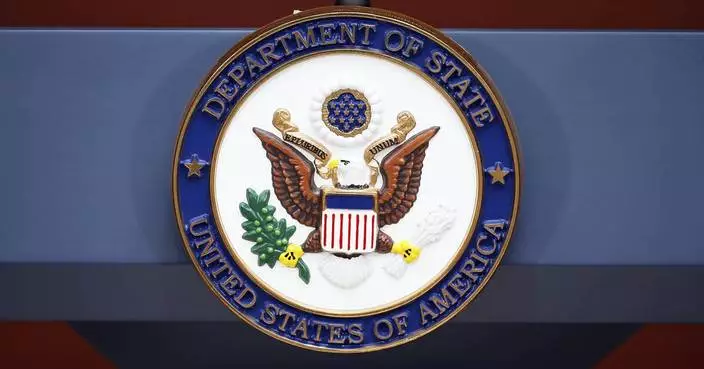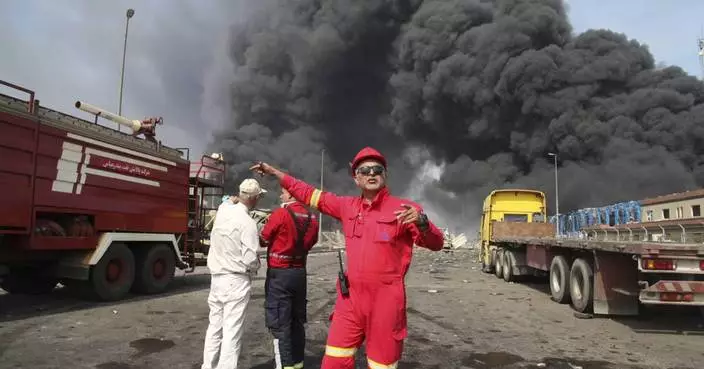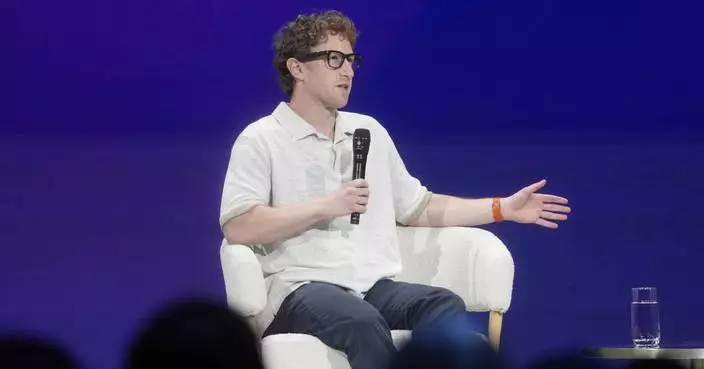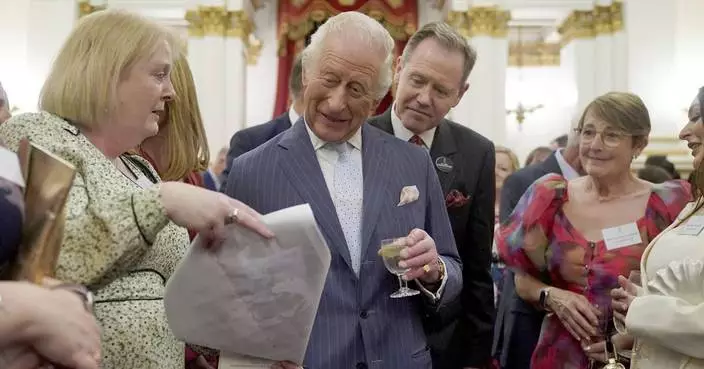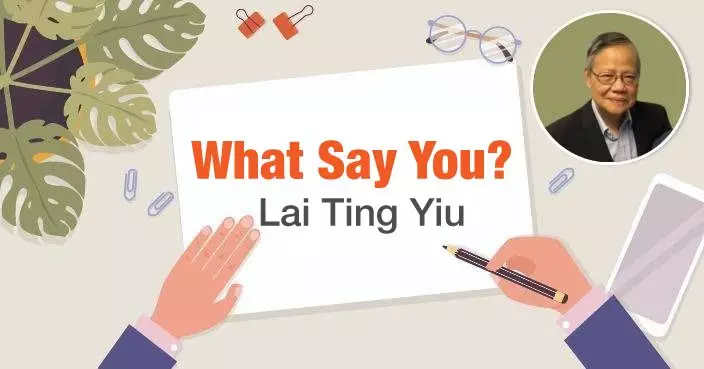"Ad Astra" looks and sounds like a space epic with a movie star lead in Brad Pitt, but there's a lot more going on beneath the surface.
Pitt said Thursday at the Venice International Film Festival that he and director James Gray are really digging into the idea of masculinity.
"Having grown up in an era where you're taught to be strong and not show weakness ... there is certain value in that but there's also a barrier that's created denying those pains or those things you feel ashamed to reveal," Pitt said. "I think we were asking the question: Is a better definition for us actually being more open divining a better relationship with your loved ones, with your parents, with your kids, and with yourself?"
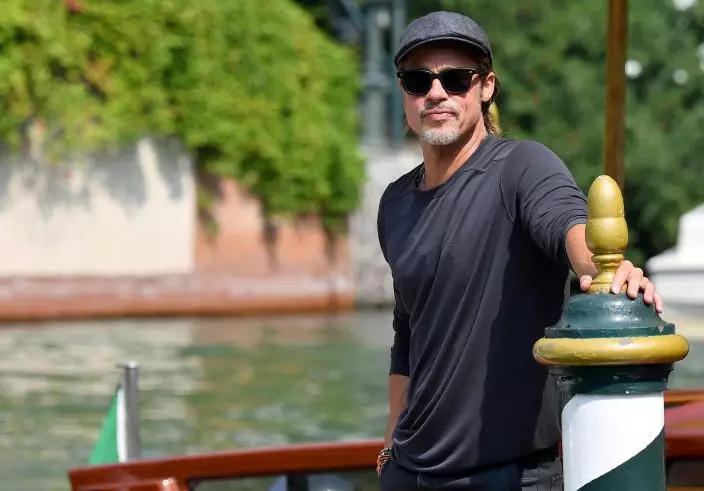
Actor Brad Pitt arrives at the Lido Beach for the 76th edition of the Venice Film Festival, in Venice, Italy, Thursday, Aug. 29, 2019. The Venice Film Festival runs from Aug. 28 to Sept. 7. (Ettore FerrariANSA via AP)
"Ad Astra" follows Pitt's detached astronaut character Roy McBride on a journey to the outer reaches of space to find his estranged father, a famous astronaut himself who has long been thought dead.
In addition to starring, Pitt also produced the film which he said was one of the most challenging he's ever done. Not only did he and Gray use primarily practical sets (he laughed that he and friend George Clooney "exchanged some discomfort stories" about the strings and rigs used to simulate anti-gravity in space films) but it's an emotionally taxing role as well.
Pitt had to draw on personal pains and wounds to make his performance as honest as possible. Gray, who has been a friend of Pitt's for 25 years, would send him emails every day revealing ideas from his own life that would help set the tone for whatever was needed for that particular day on set.
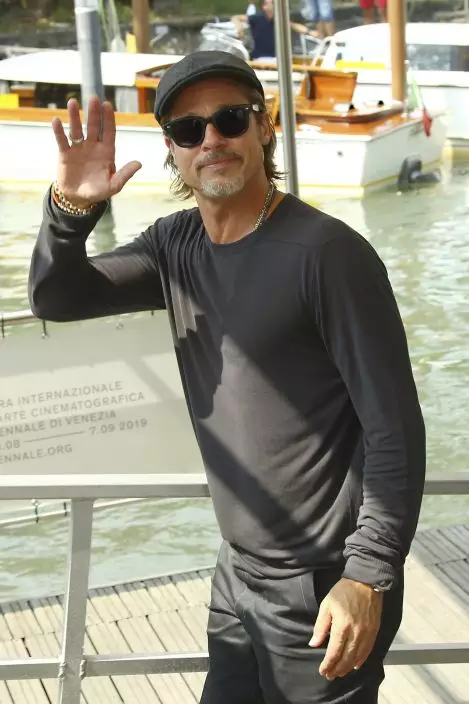
Actor Brad Pitt poses for photographers upon arrival for the photo call of the film 'Ad Astra' at the 76th edition of the Venice Film Festival in Venice, Italy, Thursday, Aug. 29, 2019. (Photo by Joel C RyanInvisionAP)
"We don't have a normal male relationship, we've always been quite open about our foibles and had big laughs at our embarrassing moments and (been) open about our feelings about our perceived failures or missteps," Pitt said. "It was a really unique experience."
Gray said he thinks its important that actors don't "worry about being liked or hated or sympathetic or unsympathetic."
"You can only worry about being honest about who you are and be vulnerable and open," he added.

Actors Ruth Negga, from left, Brad Pitt, Liv Tyler and director James Gray pose for photographers upon arrival for the photo call of the film 'Ad Astra' at the 76th edition of the Venice Film Festival in Venice, Italy, Thursday, Aug. 29, 2019. (AP PhotoDejan Jankovic)
The film had its world premiere at the 76th edition of the Venice festival and is in competition for the Golden Lion, alongside films like "Joker" and "Marriage Story." Past winners like "The Shape of Water" and "Roma" have in recent years gone on to win or gain best picture nominations come Oscar time. But when asked about the Oscar prospects of "Ad Astra," Pitt, who has yet to win an Oscar for acting despite being nominated twice, deflected.
"Every year I see amazing talent getting acknowledged and amazing talent not getting acknowledged. And my feeling is when your number comes up it's great fun and when someone else's number comes up it's very fun to see," Pitt said. "How was that for a dodge?"
His focus right now is simply finally releasing the film to the public. "Ad Astra's" release date has been pushed back a few times, as Fox integrated its release schedule with Disney after the acquisition.
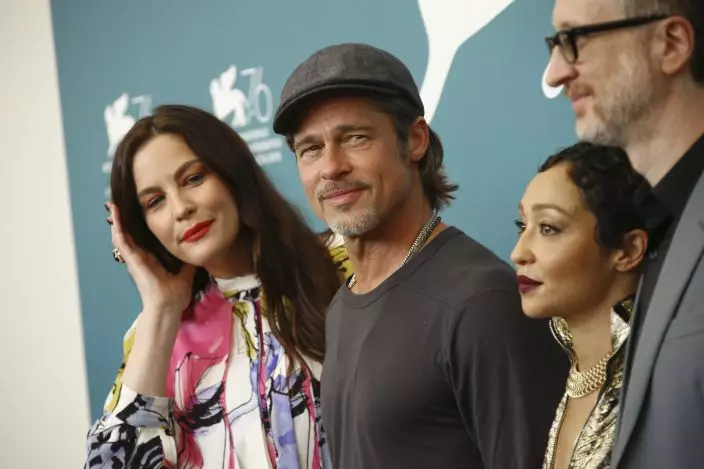
Actors Liv Tyler, from left, Brad Pitt, Ruth Negga and director James Gray pose for photographers at the photo call for the film 'Ad Astra' at the 76th edition of the Venice Film Festival in Venice, Italy, Thursday, Aug. 29, 2019. (Photo by Joel C RyanInvisionAP)
"I just want to get this film out," Pitt said. "It's a challenging film. It's subtle and it's operating on many cylinders and it has something to say about who we are, the soul, why we hang on, what's our purpose? I'm curious to see where it lands. "
"Ad Astra" opens nationwide on Sept. 20.
---
Follow AP Film Writer Lindsey Bahr on Twitter: www.twitter.com/ldbahr
KYIV, Ukraine (AP) — After months of tense negotiations, the U.S. and Ukraine signed a deal that is expected to give Washington access to the country’s critical minerals and other natural resources, an agreement Kyiv hopes will secure long-term support for its defense against Russia.
According to Ukrainian officials, the version of the deal signed Wednesday is far more beneficial to Ukraine than previous versions, which they said reduced Kyiv to a junior partner and gave Washington unprecedented rights to the country's resources.
The agreement — which the Ukrainian parliament must ratify — would establish a reconstruction fund for Ukraine that Ukrainian officials hope will be a vehicle to ensure future American military assistance. A previous agreement was nearly signed before being derailed in a tense Oval Office meeting involving U.S. President Donald Trump, U.S. Vice President JD Vance and Ukrainian President Volodymyr Zelenskyy.
“We have formed a version of the agreement that provides mutually beneficial conditions for both countries. This is an agreement in which the United States notes its commitment to promoting long-term peace in Ukraine and recognizes the contribution that Ukraine has made to global security by giving up its nuclear arsenal,” Economy Minister Yulia Svyrydenko, who signed the deal for Ukraine, said in a post on Facebook.
The signing comes during what U.S. Secretary of State Marco Rubio said would be a “very critical” week for U.S.-led efforts to end the war that appear to have stalled. Ukraine sees the deal as a way to ensure that its biggest and most consequential ally stays engaged and doesn’t freeze military support, which has been key in its 3-year-old fight against Russia’s full-scale invasion.
“This agreement signals clearly to Russia that the Trump administration is committed to a peace process centered on a free, sovereign, and prosperous Ukraine over the long term,” Treasury Secretary Scott Bessent, who signed for the U.S., said in a statement.
Here is a look at the deal.
The deal covers minerals, including rare earth elements, but also other valuable resources, including oil and natural gas, according to the text released by Ukraine's government.
It does not include resources that are already a source of revenue for the Ukrainian state. In other words, any profits under the deal are dependent on the success of new investments. Ukrainian officials have also noted that it does not refer to any debt obligations for Kyiv, meaning profits from the fund will likely not go toward the paying the U.S. back for its previous support.
Officials have also emphasized that the agreement ensures full ownership of the resources remains with Ukraine, and the state will determine what can be extracted and where.
The text of the deal lists 55 minerals but says more can be agreed to.
Trump has repeatedly expressed interest in Ukraine's rare earth elements, and some of them are included in the list, as are other critical minerals, such as titanium, lithium and uranium.
They are a group of 17 elements that are essential to many kinds of consumer technology, including cellphones, hard drives and electric and hybrid vehicles.
China is the world’s largest producer of rare earth elements, and both the U.S and Europe have sought to reduce their dependence on Beijing, Trump’s chief geopolitical adversary.
They include elements such as lanthanum, cerium and scandium, which are listed in the deal.
The agreement establishes a reconstruction investment fund, and both the U.S. and Ukraine will have an equal say in its management, according to Svyrydenko.
The fund will be supported by the U.S. government through the U.S. International Development Finance Corporation agency, which Ukraine hopes will attract investment and technology from American and European countries.
Ukraine is expected to contribute 50% of all future profits from government-owned natural resources into the fund. The United States will also contribute in the form of direct funds and equipment, including badly needed air defense systems and other military aid.
Contributions to the fund will be reinvested in projects related to mining, oil and gas as well as infrastructure.
No profits will not be taken from the fund for the first 10 years, Svyrydenko said.
Trump administration officials initially pushed for a deal in which Washington would receive $500 billion in profits from exploited minerals as compensation for its wartime support.
But Zelenskyy rejected the offer, saying he would not sign off on an agreement “that will be paid off by 10 generations of Ukrainians.”
Ukraine’s rare earth elements are largely untapped because of state policies regulating the industry, a lack of good information about deposits, and the war.
The industry’s potential is unclear since geological data is thin because mineral reserves are scattered across Ukraine, and existing studies are considered largely inadequate, according to businessmen and analysts.
In general, however, the outlook for Ukrainian natural resources is promising. The country's reserves of titanium, a key component for the aerospace, medical and automotive industries, are believed to be among Europe’s largest. Ukraine also holds some of Europe’s largest known reserves of lithium, which is required to produce batteries, ceramics and glass.
In 2021, the Ukrainian mineral industry accounted for 6.1% of the country’s gross domestic product and 30% of exports.
An estimated 40% of Ukraine's metallic mineral resources are inaccessible because of Russian occupation, according to data from We Build Ukraine, a Kyiv-based think tank. Ukraine has argued that it's in Trump’s interest to develop the remainder before Russian advances capture more.
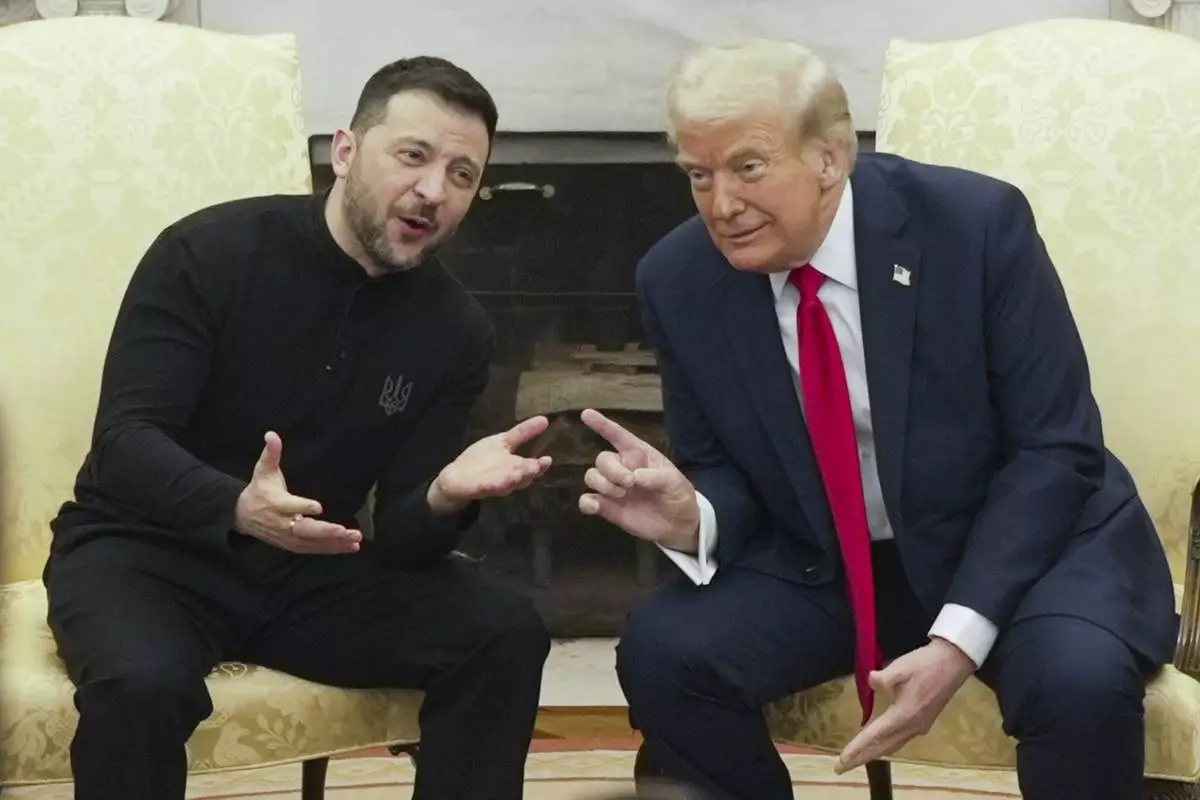
FILE - President Donald Trump, right, meets with Ukrainian President Volodymyr Zelenskyy in the Oval Office at the White House, Feb. 28, 2025, in Washington. (AP Photo/ Mystyslav Chernov, File)
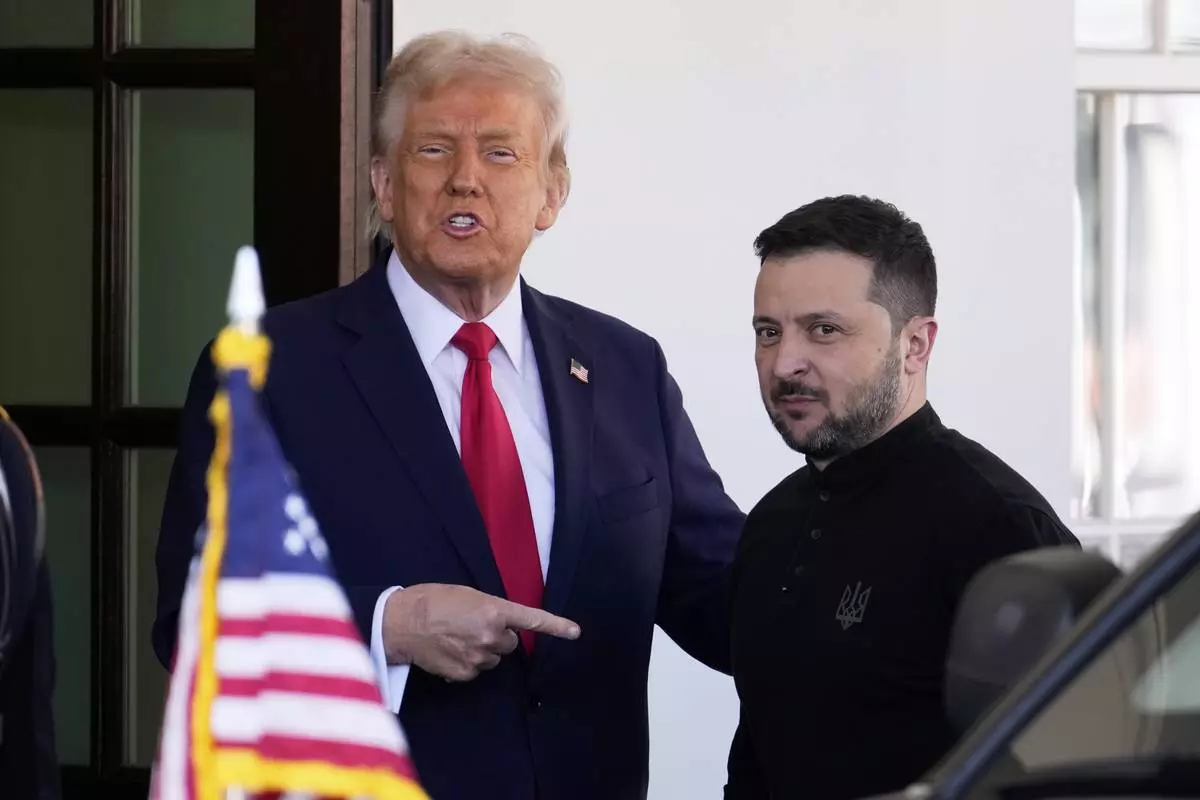
President Donald Trump welcomes Ukraine President Volodymyr Zelenskyy at the White House in Washington, Friday, Feb. 28, 2025. (AP Photo/Ben Curtis)









